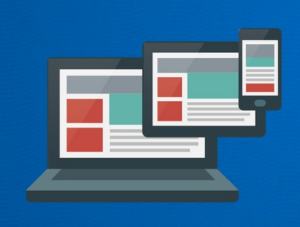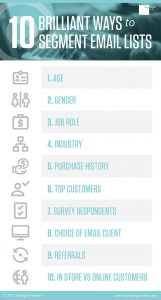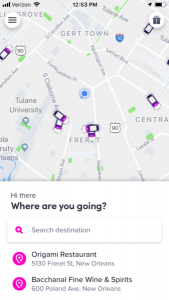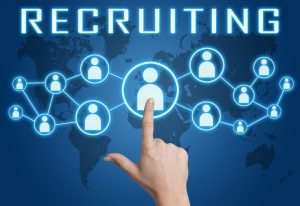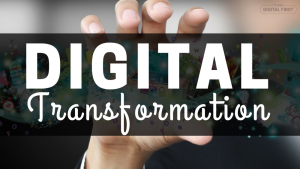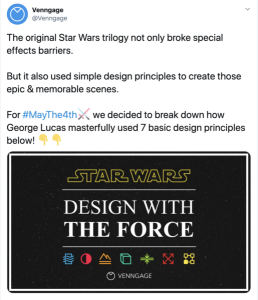When we think of Human Resources and Marketing, we usually think of two distinct departments within a company, one focused on external matters, one focused on internal matters. But more and more these two departments are working together.
Consumerization of HR
Many call it the consumerization of HR. Human Resources is no longer a more behind the scenes force in the workplace focused on recruitment, engagement, or development. HR and marketing are working together to create the brand of the organization.
While the marketing department communicates the brand of the company to consumers, the collaboration of HR and marketing communicates the brand of the company to employees. Using social and technology-based tools, companies are creating a universal brand message, one that applies to employees, applicants, and consumers.
Working together, HR finds the best people to promote and build the brand, while marketing creates and delivers the brand message to employees. This process works so well that 67% of Best-In-Class companies have a clear brand message that integrates HR and marketing processes.
Companies are learning that a brand is just not for consumers, but that all employees need to live the brand. Businesses are seeing great results with this type of collaboration.
The benefits of consumerization
When marketing and HR work together they both benefit from the collaboration. These benefits translate into benefits for employees, consumers, and potential employees.
For marketing
The HR department primarily serves the company’s employees. Due to the connection with employees, the department can share the brand messaging created in marketing with employees through training sessions, evaluations, and employee orientations.
Through the collaboration with HR, brand messaging can spread throughout the company through internal communication. Employees can become brand ambassadors which then strengthens the marketing department’s mission of spreading the brand message to consumers.
For HR
Due to the marketing team’s connections with consumers, they can help promote the values and mission if the company. Through this promotion, they can help attract potential employees. Marketing can also help the HR department and other employees adapt communication methods and styles as marketing employees have experience in communicating with consumers.
If you do not already have a structure of collaboration in place, it might take some work at the start, but it can become more streamlined as time goes on. There are a few things that companies need to start doing to benefit from the consumerization of HR.
How to achieve consumerization
Building the team
To start the process, senior leaders need to invest time and energy into bringing everyone together. Both the HR and marketing departments need to have meetings with leaders in which objectives and strategies are discussed. If there are any struggles or any confusing moments during the collaboration they need to resolve them in a respectful manner during ongoing meetings.
Using social media
Creating a strong and active social media presence can help both internal and external communication of the brand. Members of both the marketing and HR teams can post inspiring stories, company accomplishments, and personal anecdotes about the company and the brand to communicate with customers and potential employees. Internally, the two departments can work together to recognize employee performance and to share information about the company and the brand.
GE used this strategy to attract new employees. The marketing department created a funny ad about being a programmer at GE. When the ad was posted on YouTube, they added a link to GE’s career website. Due to the collaboration between marketing and HR, visits to the recruitment page increased by 66% compared with the previous month.
Provide more training
In many companies, employees have meetings and training sessions with HR staff when they are hired, but not much after that. An internal training plan is a great way to help employees develop skills and keep them engaged. While the HR team may be responsible for training employees, the marketing team can help by promoting the training sessions and marketing the company as a great place to work. The team can also create sessions of their own focusing on using social media marketing and brand messaging in order to help turn employees into brand ambassadors.
In order to do this, many companies are turning to MOOCs (Massive, Open, Online Courses) and cloud learning management systems. Employees can take an incredible number of classes on a variety of topics or even create personalized learning plans.
Create company events
Company events that allow leadership to communicate directly with employees and build that relationship is a great way to create trust and openness. HR can arrange the events while marketing can promote them both externally and internally. When HR and marketing work together to create moments where employees can interact with leaders, employees feel more appreciated.
Share data
In order to create a solid brand message, both internal and external aspect of the brand need to be working together. In order to make this happen departments need to share data and findings with each other. In the case of HR and marketing, HR can share information gathered from exit and stay interviews, while marketing can share information gathered from customer satisfaction surveys.
Continue to build relationships
Turnover is something that all companies struggle with at times. With the efforts of HR and marketing, leaders can use turnover to expand the brand message to a wider audience. When employees feel appreciated they are more likely to become brand ambassadors. They can help promote the business to potential consumers and employees. Working together, HR and marketing can create events and promote ways of staying in touch with former employees, or can even try to recruit former employees that may boomerang back to the company.
Employee advocacy programs, as they are sometimes called, have grown by about 190% since 2013. Efforts to engage with former employees seems to pay off for many companies. Hootsuite CEO, Ryan Holmes, found that employee posts about a company are shared 25 times more often and interacted with 8 times more often than posts created by the company.
Monitor social media
HR and marketing can both monitor social media in order to get insights about how consumers feel about the brand as well as how current or former employees feel about the company. With this data, the departments can work together to make internal and external changes to communication and brand messaging.
It may seem unnatural or awkward at first, but the consumerization of HR can cause a powerful and long-lasting positive impact. The job of the marketing department is more difficult when HR has difficulty managing and developing employee talents, while HR has difficulty hiring and recruiting top candidates when marketing has difficulty connecting with consumers. When they work together, their success can create better-recruiting results, a stronger culture, and overall business success.
Business & Finance Articles on Business 2 Community(111)
